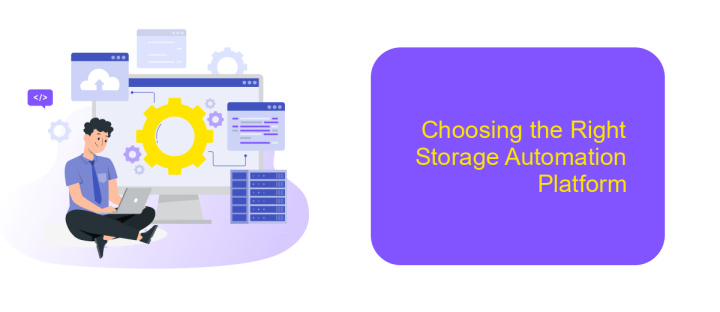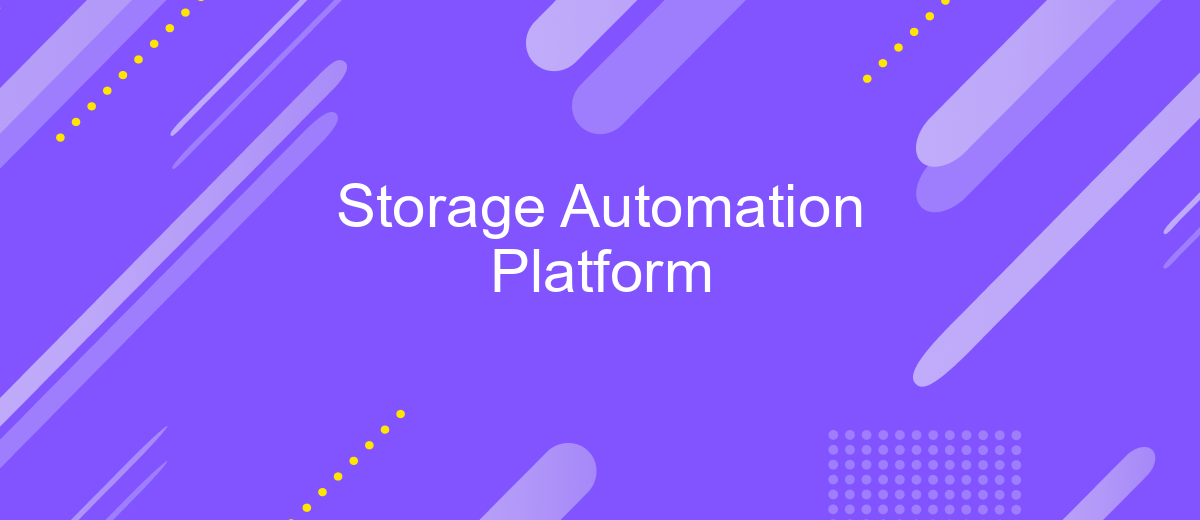Storage Automation Platform
In today's fast-paced digital landscape, the demand for efficient data management solutions is higher than ever. A Storage Automation Platform offers a revolutionary approach to streamline storage operations, enhancing both performance and scalability. By automating routine tasks, it minimizes human error and optimizes resource utilization, enabling businesses to focus on strategic growth. Discover how this cutting-edge technology can transform your data management strategy.
Introduction to Storage Automation Platforms
In today's rapidly evolving digital landscape, the demand for efficient data management solutions is higher than ever. Storage automation platforms have emerged as a pivotal innovation, offering streamlined processes and enhanced data handling capabilities. These platforms are designed to automate the management of storage resources, reducing manual intervention and minimizing the risk of human error. By leveraging advanced technologies, businesses can optimize their storage infrastructure, leading to improved performance and cost-effectiveness.
- Automated provisioning and configuration of storage resources
- Real-time monitoring and analytics for proactive management
- Seamless integration with existing IT infrastructure
- Enhanced data protection and disaster recovery solutions
- Scalability to accommodate growing data needs
As organizations continue to generate vast amounts of data, the role of storage automation platforms becomes increasingly crucial. These platforms not only simplify storage management but also empower businesses to focus on their core operations by alleviating the burden of complex storage tasks. By adopting storage automation, companies can achieve greater agility, resilience, and competitiveness in the digital age.
Key Features and Benefits of Storage Automation

Storage automation platforms offer transformative features that streamline data management processes, enhancing efficiency and reducing the risk of human error. One of the key features is intelligent data tiering, which automatically categorizes and stores data based on usage patterns and access frequency. This ensures optimal use of storage resources, minimizing costs while maximizing performance. Furthermore, these platforms often include robust data protection mechanisms, such as automated backups and disaster recovery solutions, safeguarding critical information against potential threats.
In addition to core functionalities, the integration capabilities of storage automation platforms significantly enhance their utility. Services like ApiX-Drive facilitate seamless integration with various applications, enabling automated workflows and real-time data synchronization across systems. This not only improves operational efficiency but also allows for more agile and responsive business processes. Overall, the benefits of storage automation are clear: reduced operational costs, improved data security, and enhanced business agility, making it an essential component for modern enterprises seeking to optimize their data management strategies.
Use Cases and Deployment Scenarios

Storage Automation Platforms (SAPs) are revolutionizing the way businesses manage and optimize their data storage solutions. These platforms offer a range of use cases that cater to diverse industries, enhancing efficiency and reducing operational costs. By automating routine storage tasks, SAPs free up IT resources, allowing teams to focus on strategic initiatives and innovation.
- Data Backup and Recovery: Automate backup processes to ensure data integrity and quick recovery during outages.
- Resource Allocation: Dynamically allocate storage resources based on real-time analytics to meet changing business demands.
- Compliance Management: Automatically enforce data retention and security policies to meet regulatory requirements.
- Performance Optimization: Continuously monitor and adjust storage performance for optimal application functionality.
- Hybrid Cloud Integration: Seamlessly integrate on-premises storage with cloud solutions for a flexible storage environment.
Deployment scenarios for SAPs vary across organizations, depending on their specific needs and infrastructure. Enterprises may choose on-premises deployment for greater control and security, while others might opt for cloud-based solutions to leverage scalability and cost-effectiveness. Hybrid deployments are also popular, offering the best of both worlds by combining local and cloud storage resources. Ultimately, the choice of deployment scenario depends on the organization's strategic goals, existing infrastructure, and future growth plans.
Choosing the Right Storage Automation Platform

Choosing the right storage automation platform is crucial for optimizing data management and ensuring seamless operations. With a myriad of options available, it's essential to focus on key features that align with your organization's needs. Consider platforms that offer scalability, flexibility, and robust integration capabilities to future-proof your storage solutions.
Begin by evaluating the specific requirements of your business, such as data volume, type, and access patterns. This assessment will guide you in selecting a platform that can efficiently handle your current and future data workloads. Additionally, prioritize platforms that offer user-friendly interfaces and comprehensive support resources.
- Scalability: Ensure the platform can grow with your data needs.
- Integration: Look for seamless compatibility with existing systems.
- Security: Prioritize platforms with strong data protection measures.
- Cost-effectiveness: Balance features with budget considerations.
Ultimately, the right storage automation platform should empower your organization to streamline operations and enhance data accessibility. By carefully considering your specific needs and evaluating potential platforms against these criteria, you can make an informed decision that supports your long-term strategic goals.
Future Trends in Storage Automation
As we look to the future of storage automation, one of the key trends is the integration of artificial intelligence and machine learning. These technologies are set to revolutionize how data is managed, offering predictive analytics and automated decision-making processes that enhance efficiency. This evolution will allow systems to anticipate storage needs and optimize resource allocation without human intervention, leading to more resilient and adaptive storage solutions.
Another significant trend is the increasing emphasis on seamless integration across various platforms and applications. Services like ApiX-Drive are at the forefront, facilitating effortless connectivity between disparate systems. By automating data transfers and synchronizations, such services ensure that storage automation platforms can operate in harmony with other business tools, enhancing overall productivity. As organizations continue to embrace digital transformation, the demand for robust and flexible integration solutions will grow, making them an integral part of future storage automation strategies.
FAQ
What is a Storage Automation Platform?
How does a Storage Automation Platform improve efficiency?
Can a Storage Automation Platform integrate with existing IT systems?
What are the key features to look for in a Storage Automation Platform?
How can I implement automation and integration in my storage systems?
Time is the most valuable resource for business today. Almost half of it is wasted on routine tasks. Your employees are constantly forced to perform monotonous tasks that are difficult to classify as important and specialized. You can leave everything as it is by hiring additional employees, or you can automate most of the business processes using the ApiX-Drive online connector to get rid of unnecessary time and money expenses once and for all. The choice is yours!

